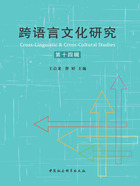
2.Method
Participants
Forty Japanese-speaking school-age children residing in the multilingual San Francisco area participated in the study.This age group was selected because(1) the process of children's language development,in many important ways,continues actively into the elementary school years,and(2) the elementary school years are a period of extremely rapid development in the acquisition of literacy-related skills.There were 17 boys and 23 girls,ages six to twelve.Specific information regarding the 40 participating children and their families is as follows:(1) All the children were either enrolled in English/Japanese bilingual programs in public elementary schools or were taking Japanese language classes on weekends in addition to attending public schools.(2) Twenty-five children were from families in which both parents were native Japanese speakers;the remaining 15 children were from families in which only the mother was a native Japanese speaker.(3) Nineteen children were born in Japan;the remaining 21 children were born in the United States.Finally,because all the mothers were native speakers of Japanese and used that language exclusively with their children initially,the children's first language was considered to be Japanese,regardless of their fluency or level of competency in that language at the time of the study.
By the time this study was conducted,however,the children's proficiency in English may have exceeded that in Japanese.It is common to classify bilinguals as being dominant in the first language(L1),the second language(L2),or balanced(i.e.,equally proficient in both L1 and L2).A balanced bilingual may be identified through a variety of tests(Flege,MacKay,& Piske,2002).In the current study,the Bilingual Verbal Ability Tests(BVAT)(Muñoz-Sandoval,Cummins,Alvarado,& Ruef,1998) was used as a screening measure.It was found that the children performed approximately equally well in both languages,and were therefore “balanced” bilinguals.
Procedure
Mercer Mayer's(1969) wordless storybook,Frog where are you?,was used to elicit narratives in English and Japanese.The book consists of a sequence of 24 illustrations.Mayer's book has an engaging story;narrators are expected to use their own words to create a story,using appropriate linguistic devices(e.g.,connectives) if necessary.Previous research(e.g.,Berman & Slobin,1994) has shown that the book is useful for successfully eliciting verbal participation from children.The book,which was first used by Bamberg(1987) for a research purpose,describes the adventures of a young boy and his pet dog as they search for his run-away frog.Throughout their quest,the boy and the dog encounter several challenges,including a swarm of angry bees,a ride on the antlers of a deer,and a tumble into a pond.These obstacles appear during the story,impeding the boy and his dog's attempts to achieve their goal.Eventually,however,the boy and his dog find their frog,which was resting with its mate and baby frogs.The story concludes with the boy waving goodbye while holding a baby frog in his hand.
The participating children were first allowed to look through the pictures to become familiar with the plot.They were then asked to narrate the story with the support of the pictures,first in English and then in Japanese or vice versa.The so-called frog story,which consists of a series of pictures representing a number of dynamic interactions among the boy,the dog,the frog,and other characters over time and in different physical settings,was thus judged to be appropriate for examining children's encoding of agency.Note that in the tables that appear in this paper,the children's names appear in the ascending order of their year in school(grade).[Note:All children are referred to at least once in the text,and a complete list of the children's grades and ages is available in Table 13.] The participants did not tell stories at the beginning of a school year.Thus,in order to show clearly the grade of the participants on the date they narrated stories,the grade level was divided into tenths.For instance,because Natsuko(Girl;Age 10 years,9 months) told stories on April 1,her date falls in the seventh month of a ten-month school year(.7).Because she was in the fifth grade,her grade was recorded as 5.7.
Coding Rules
Narrative samples elicited with the aforementioned wordless frog story were transcribed and broken into utterances according to the guidelines of Codes for the Human Analysis of Transcripts(CHAT),so that they were readable by the computer program Computerized Language Analysis(CLAN)(MacWhinney,2000;MacWhinney & Snow 1985,1990).
The coding rules are as follows:
(1)In English and Japanese,linking verbs are excluded for analysis,e.g.,be-verbs in English and their equivalents of Japanese auxiliary verb desuand deshi-ta(the past tense of desu).[In English,“get” in get-passives is not counted because it is a copula and performs a similar function to be-passives(with regard to get- and be-passives,see the results section).]
(2)In English expressions,such as “start to chase” and “start chasing”,both “start” and “chase” are considered verbs.In Japanese,te -linkage,or more broadly the -teform,is generally considered to consist of two verbs when used to combine two or more verbs.
(3)In both languages,repeated words are excluded from analysis.
To examine how bilingual children encode perspective in their narratives,the present study performed both qualitative and quantitative analyses.